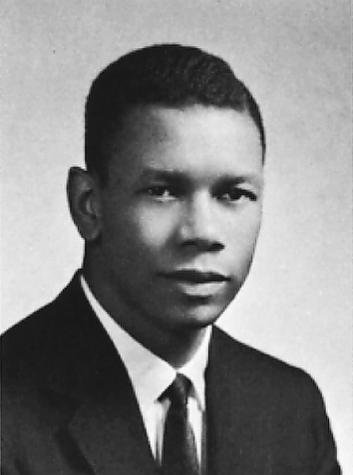Reginald Griffith, 1955

Reginald W. Griffith, Class of 1955
Reginald Wilbert Griffith earned a Bachelor's in Architecture from MIT in 1960, although he identified with the Class of 1955.
In March of 1955, Griffith, along with Eldon Reilley '55, a white MIT student, organized the three-day National Conference on Selectivity and Discrimination in American Universities to discuss issues of racial discrimination in higher education. The event, which included a keynote by historian John Hope Franklin entitled "The Problems of Race in America," was quite likely the first of its kind held anywhere in the United States at the time.
After being drafted into the Army Corps of Engineers and studying housing problems in West Africa on a traveling fellowship, Griffith went on to earn a Masters in City Planning from MIT in 1969. His thesis was entitled "The influence of meaningful citizen participation on the urban renewal process and the renewal of the inner-city's black community: a case study".
Early Years
Picking the worms out of a flour barrel in a Harlem grocery store when he was 11 was the first job held by Reginald Griffith, the Washington area's new chief federal planner.
Between the worms and Washington lay a long route that took Griffith to prestigious architectural and planning firms in Boston and New York, the Massachusetts Institute of Technology, building Army missile bases in Germany, a fellowship in Africa. That and other experience made: him "the outstanding choice" among more than 40 candidates for the $47,500-a-year job as executive director of the National Capital Planning Commission...
[He] did not see much of a future when he lived in a "bucket of blood hole" in Harlem with his sister and mother. His mother was born in Panama, after her family moved from Trinidad and Barbados.
He was told he had no chance of getting into the prestigious Brooklyn Technical (High) School, which Griffith said had only 60 blacks among its 6,000 students. But he applied and took exams and "somehow" got in. It was one of many turning points...
"Long Road Brings Planner to the Top" by Paul Hodge, The Washington Post, 26 April 1979